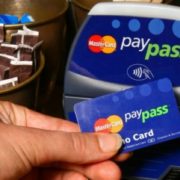‘Tap and Go’…is PayWave a help or a hindrance?
These days we don’t need to carry any cash. We can buy almost anything we like simply by swiping our card.
Recently we have seen the developments of apps that allow us to use our smart phone as a device for paying. As convenient as shopping without cash is, it does have its drawbacks.
How often have you looked at your bank account only to see pages and pages of often small debits? The cup of coffee, a sandwich, a magazine or tickets to a movie – they’re all there. And when we look at the remaining balance, we ask ‘where did the money go?’
When we live in a cashless world, it is hard to keep track of our spending. We just spend until there is nothing left.
This becomes a double–edged sword.
For many of us, if we are going to save anything, we save what is left over from the previous pay when our next pay comes in. We should be paying ourselves first – that is transferring our agreed savings before we start spending the remainder.
Of course, when we get to the end of our pay period, there is often nothing left to save anyway. We spend without knowing where the money goes. Sure, there are big ticket items like rent, petrol, insurance, electricity etc. but it is amazing just how much we spend on ‘junk’ without giving it a moment’s thought.
Back in the ‘old days’, we didn’t have the convenience of swiping a card, phone or other devices. And, we didn’t have ATMs!
So how did we manage our cash?
One popular strategy was to have ‘jars’. We were paid in cash which made things a bit easier. Each pay, amounts were allocated to our different jars. We always knew how much was left, and when a jar was empty, we went without.
One of the problems today is a lack of discipline when it comes to spending. It is just so easy to swipe a card.
A couple of months back I found that I was going through my money quite quickly and couldn’t reconcile where it was being spent.
I found that I needed (let’s say) $20 each day for discretionary spending. So, rather than just swiping my card each time I needed something, I got 8 small jars – one labelled for each day of the week, and one called ‘leftover’.
I then put $20 in each of the ‘day jars’. Every morning I took my daily allowance from its jar and put it in my wallet. If there was any money remaining from the previous day, it went into the ‘left-over’ jar.
I know this sounds extremely simplistic, but here’s what I found after a couple of weeks:
- Having the physical cash reminded me of how much discretionary spending I have each day.
- I am no longer running out of money before the next pay comes in.
- I am thinking twice before buying things I don’t really need.
- I have money left over at the end of each week, for saving or putting towards larger bills.
Managing cash flow is a significant problem in today’s world. It is not confined to younger people, but is experienced by all generations.
Learning to live within our means will result in a more financially secure future, with the added bonus of less stress.
Source: Peter Kelly | Centrepoint Alliance

